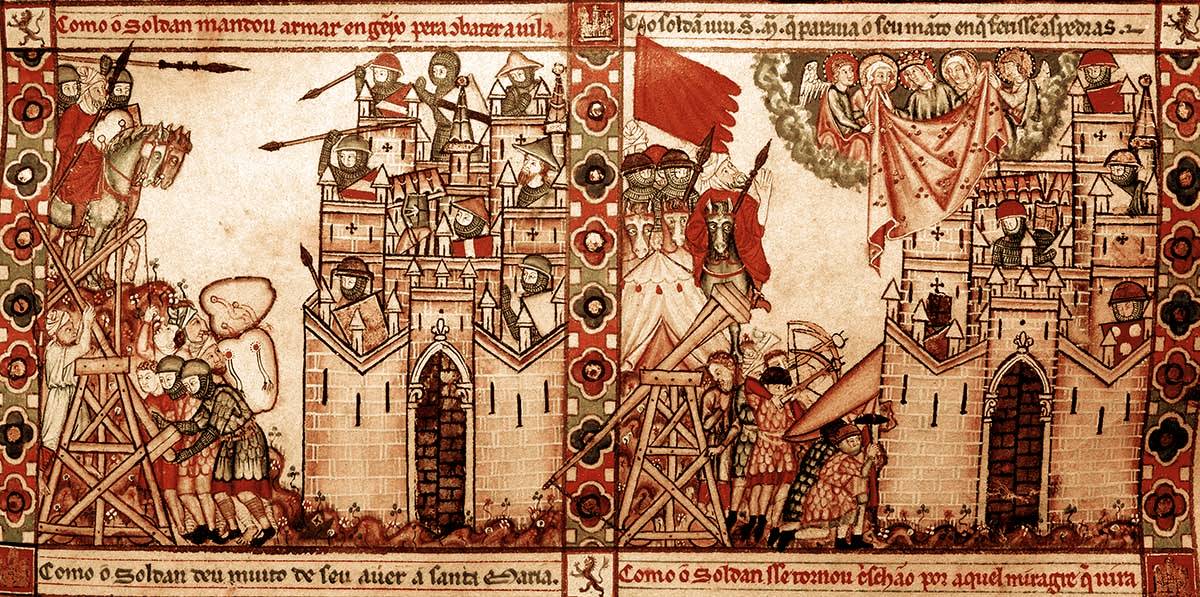Crusading in northern and eastern Europe led to the expansion of kingdoms like Denmark and Sweden, as well as the creation of brand-new political units, for example in Prussia. As areas around the Baltic Sea were taken by the crusaders, traders and settlers—mostly German—moved in and profited economically.
The Crusades. – ppt download
The First Crusade was called in November 1095 by Pope Urban II at the town of Clermont in central France. The pope made a proposal: ‘Whoever for devotion alone, but not to gain honour or money, goes to Jerusalem to liberate the Church of God can substitute this journey for all penance.’.

Source Image: scribd.com
Download Image
Crusades – Religious Conflict, Legacy, Impact: The structure of European society changed during the 12th and 13th centuries. The Crusades were a significant factor in Europe’s development and had a marked impact on the development of Western historical literature. The Crusades slowed the advance of Islamic power; without the Crusading effort, it is difficult to see how western Europe could
Source Image: quora.com
Download Image
The Crusades (1095–1291) | Essay | The Metropolitan Museum of Art | Heilbrunn Timeline of Art History One important outcome of the Crusades is that they diminished the power of the popes and increased the power of Europe’s monarchs. It was King Ferdinand and Queen Isabella, not a pope, who drove the Muslims out of Spain (and who financed Columbus’s expedition).

Source Image: homework.study.com
Download Image
How Did The Crusades Affect Europe And Southwest Asia
One important outcome of the Crusades is that they diminished the power of the popes and increased the power of Europe’s monarchs. It was King Ferdinand and Queen Isabella, not a pope, who drove the Muslims out of Spain (and who financed Columbus’s expedition). The Crusades were a series of religious wars fought by Christians from all over Europe in an attempt to retake the Holy Land from the Muslims. The wars began in 1095 and continued until 1291. While there were many short-term impacts of the crusades, such as increased trade between Europe and the Middle East, there were also several long-term effects.
How did the Crusades affect trade between Europe and Asia? | Homework.Study. com
Dec 25, 2023Major Events: Albigensian Crusade Battle of Ḥaṭṭīn Siege of Edessa Siege of Damascus Events and Impacts of the Medieval Crusades – Brewminate: A Bold Blend of News and Ideas

Source Image: brewminate.com
Download Image
The Crusades | PPT Dec 25, 2023Major Events: Albigensian Crusade Battle of Ḥaṭṭīn Siege of Edessa Siege of Damascus

Source Image: slideshare.net
Download Image
The Crusades. – ppt download Crusading in northern and eastern Europe led to the expansion of kingdoms like Denmark and Sweden, as well as the creation of brand-new political units, for example in Prussia. As areas around the Baltic Sea were taken by the crusaders, traders and settlers—mostly German—moved in and profited economically.

Source Image: slideplayer.com
Download Image
The Crusades (1095–1291) | Essay | The Metropolitan Museum of Art | Heilbrunn Timeline of Art History Crusades – Religious Conflict, Legacy, Impact: The structure of European society changed during the 12th and 13th centuries. The Crusades were a significant factor in Europe’s development and had a marked impact on the development of Western historical literature. The Crusades slowed the advance of Islamic power; without the Crusading effort, it is difficult to see how western Europe could
Source Image: metmuseum.org
Download Image
Effects of the Crusades | Overview, Results & Significance – Lesson | Study. com The Crusades were a series of military campaigns organised by Christian powers in order to retake Jerusalem and the Holy Land back from Muslim control. There would be eight officially sanctioned crusades between 1095 CE and 1270 CE and many more unofficial ones. Each campaign met with varying successes and failures but, ultimately, the wider objective of keeping Jerusalem and the Holy Land in

Source Image: study.com
Download Image
The Crusades: Did You Know? | Christian History | Christianity Today One important outcome of the Crusades is that they diminished the power of the popes and increased the power of Europe’s monarchs. It was King Ferdinand and Queen Isabella, not a pope, who drove the Muslims out of Spain (and who financed Columbus’s expedition).

Source Image: christianitytoday.com
Download Image
Crusades – Religious Conflict, Legacy, Impact | Britannica The Crusades were a series of religious wars fought by Christians from all over Europe in an attempt to retake the Holy Land from the Muslims. The wars began in 1095 and continued until 1291. While there were many short-term impacts of the crusades, such as increased trade between Europe and the Middle East, there were also several long-term effects.

Source Image: britannica.com
Download Image
The Crusades | PPT
Crusades – Religious Conflict, Legacy, Impact | Britannica The First Crusade was called in November 1095 by Pope Urban II at the town of Clermont in central France. The pope made a proposal: ‘Whoever for devotion alone, but not to gain honour or money, goes to Jerusalem to liberate the Church of God can substitute this journey for all penance.’.
The Crusades (1095–1291) | Essay | The Metropolitan Museum of Art | Heilbrunn Timeline of Art History The Crusades: Did You Know? | Christian History | Christianity Today The Crusades were a series of military campaigns organised by Christian powers in order to retake Jerusalem and the Holy Land back from Muslim control. There would be eight officially sanctioned crusades between 1095 CE and 1270 CE and many more unofficial ones. Each campaign met with varying successes and failures but, ultimately, the wider objective of keeping Jerusalem and the Holy Land in